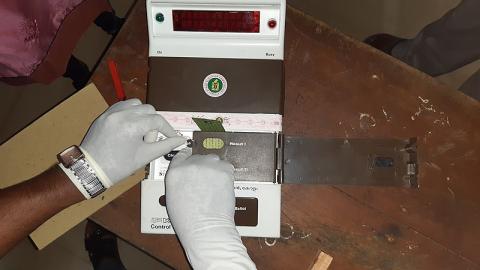How Electronic Voting Machines Cheat and What to Do About This

By Dr Naomi Wolf
LEW ROCKWELL
We think of the secret ballot as being fundamental to our rights, and indeed to our democratic system, and in many ways that belief is correct. Or it certainly would be correct, if those secret ballots were cast in a verifiable, accurately- tabulating voting system.
But the secret ballot became a sacred aspect of elections, in the days when ballots were cast in boxes, using paper. There was little risk run by those who cherished the secrecy of their choices in such a system, because the ballots could always be recounted. They were physical artefacts. They either existed or they did not.
People could steal elections in this "analog" technology of paper and locked ballot boxes, of course, by destroying or hiding votes, or by bribing voters, a la Tammany Hall, or by other forms of wrongdoing, so security and chain of custody, as well as anti-corruption scrutiny, were always needed in guaranteeing accurate election counts. But there was no reason, with analog physical processing of votes, to query the tradition of the secret ballot.
Before the digital scanning of votes, you could not hack a wooden ballot box; and you could not set an algorithm to misread a pile of paper ballots. So, at the end of the day, one way or another, you were counting physical documents.
Those days are gone, obviously, and in many districts there are digital systems reading ballots. Both the Left and the Right have accused the other team of nefarious electronic chicanery.
And as a result, the sacred secret ballot tradition, with no other option permitted to voters for managing their votes, makes digitally-read elections horribly easy to steal. As Harper’s correctly warned a decade ago, “Old-school election fraud was limited in scope, but new electronic voting systems allow insiders to rig elections on a national scale.” [https://www.electiondefense.org/how-to-rig-an-election]
The Brennan Center for Justice points out that half of America is now voting on electronic machines that are near the end of their usable lives, and that thus are vulnerable to breaking down from missing or obsolete parts, or to viruses. The authors of the Brennan Center study also note that many districts use electronic machines that do not give a paper document for each vote [a “VVPAT”]. Their description of the issue is partisan, and it seems odd to malign voters for “viral videos” and “conspiracy theories” about touch screens flipping votes when they are in fact…flipping votes, but the core of the crisis is accurately described in the following paragraphs. Bottom line: electronic ( or “direct recording electronic” or “DRE”) machines suck and can be messed with eight million ways, and if they don’t also give you a “VVPAT,” or “voter-verified paper audit trail” — (these election audit experts love citizen-unfriendly jargon) they can cause havoc:
“Of particular concern are jurisdictions that still use DRE voting machines. These machines, which may or may not produce a VVPAT, generally require a voter to use a touch-screen monitor to vote. In recent years, a number of these models have “flipped” votes, with the touch screen incorrectly registering voters’ choices due to calibration errors associated with aging hardware. That, in turn, has led to viral videos and conspiracy theories of machines “stealing votes.”



























